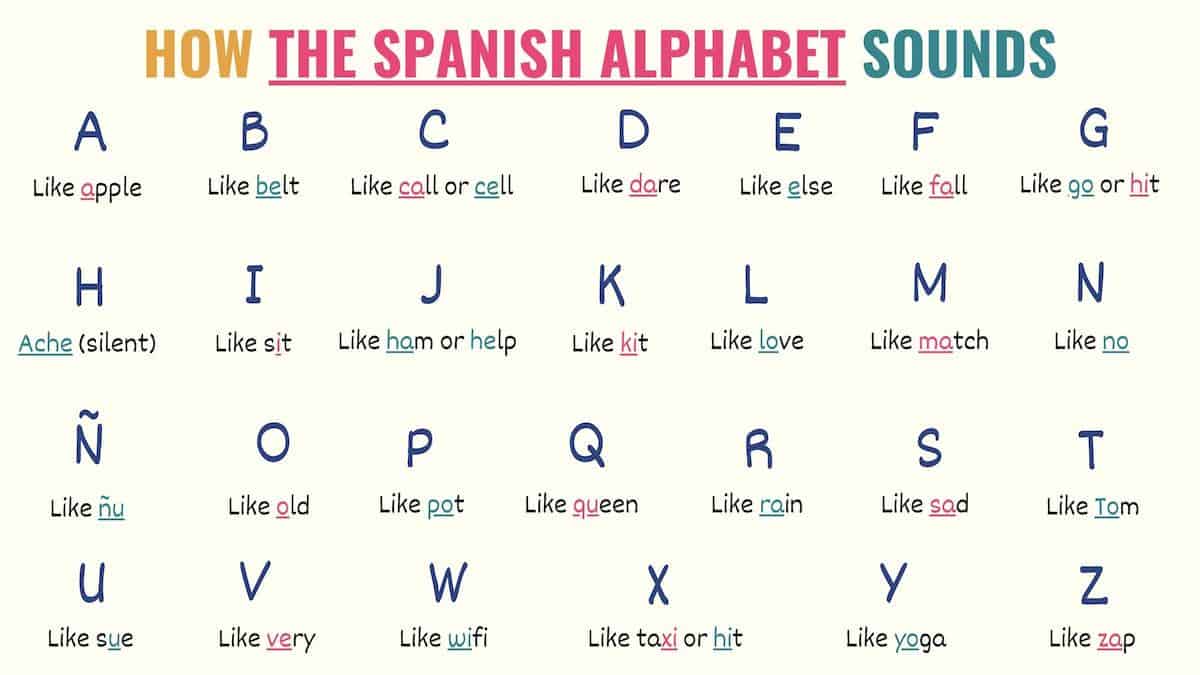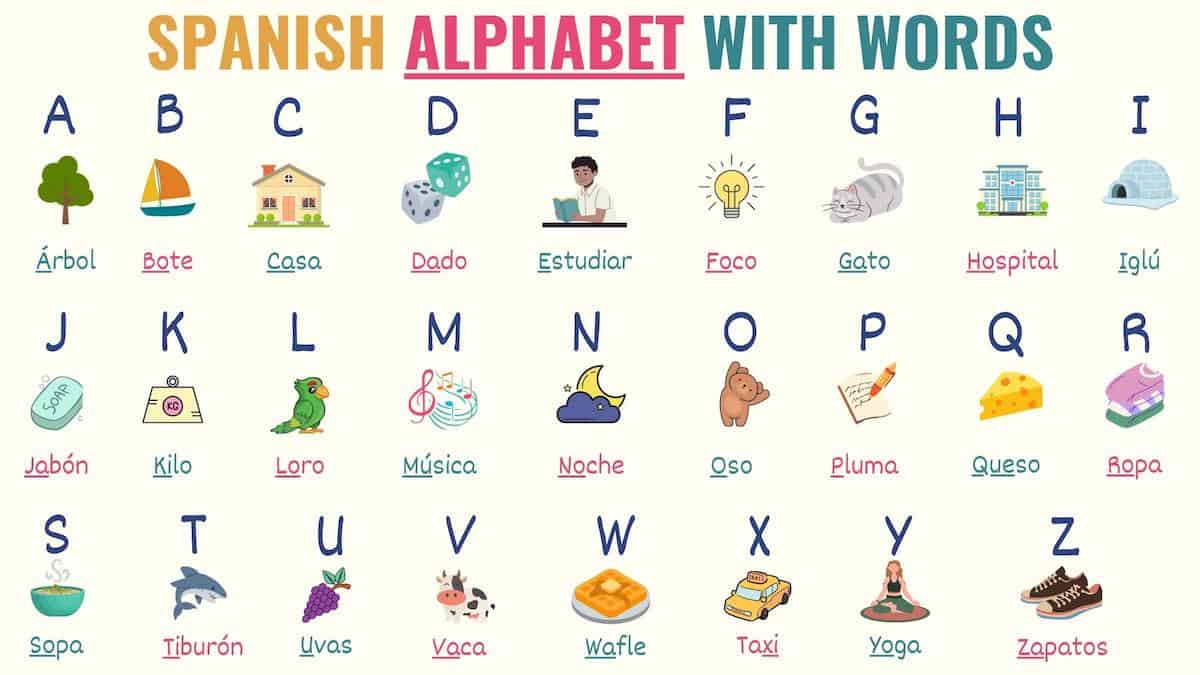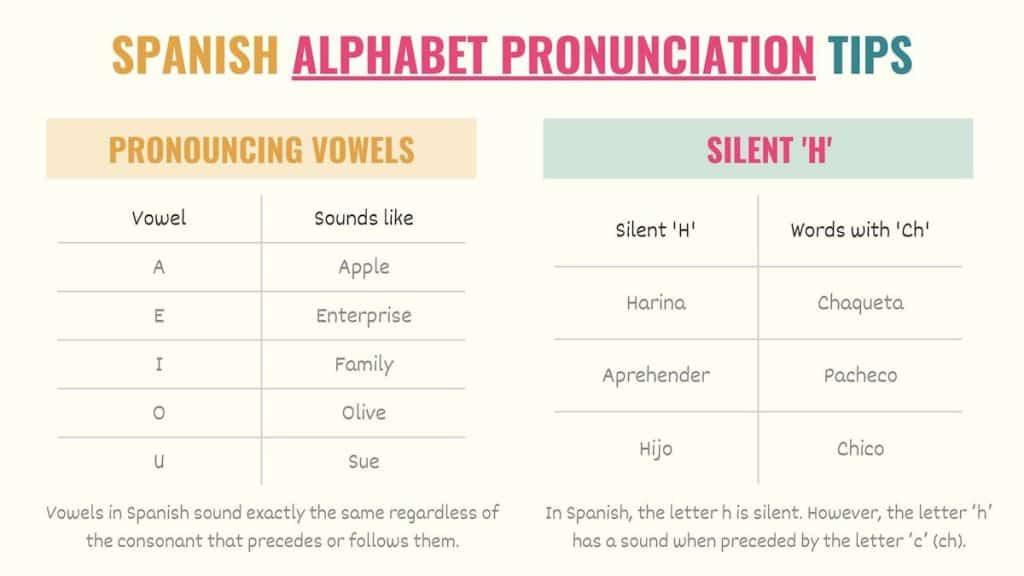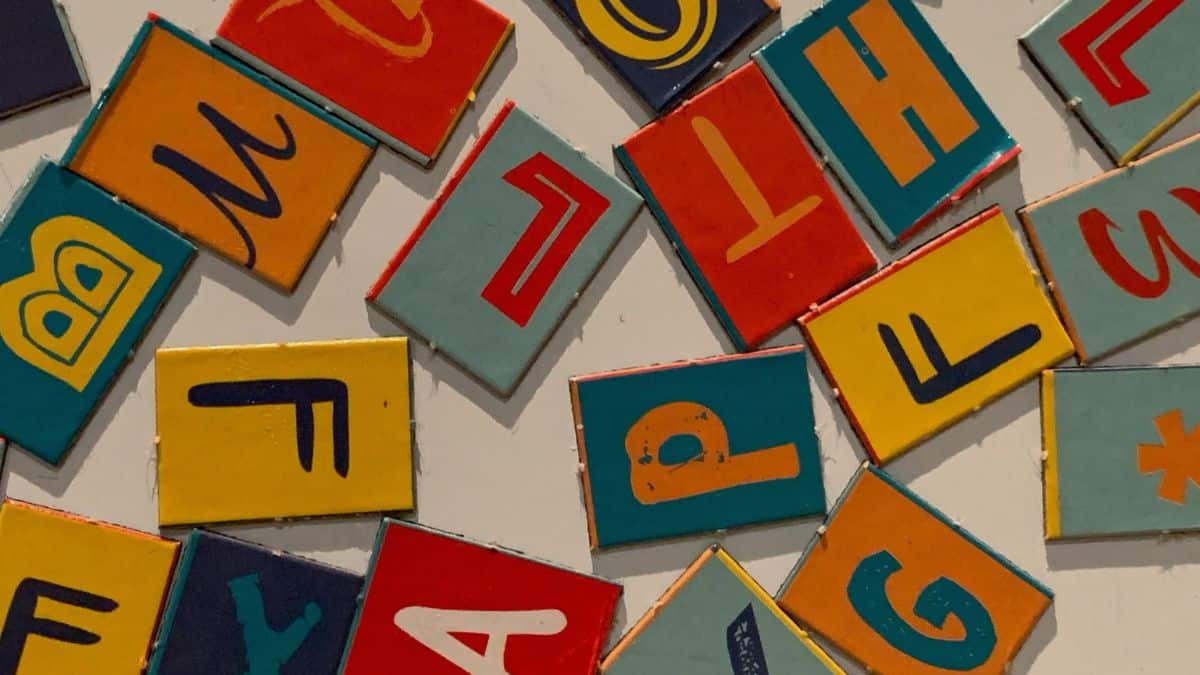I know, I know. The Spanish alphabet may not seem like a high priority when learning Spanish. However, the alphabet is the backbone of your pronunciation. To put it simply, if you want to have good pronunciation, you must take your time to understand the sounds of the alphabet in Spanish.
Since this is such a crucial topic, you’ll find key information about the Spanish alphabet in this guide. I’ll include charts and recordings so you can check the pronunciation, word examples, and notes about the letters and their sounds.
Here is an overview of the topics we’ll cover:
- Spanish Alphabet Pronunciation
- Pronunciation Tips
- Activities to Learn the Alphabet
- Facts about the Spanish Alphabet
- Alphabet Cheat Sheets
How to Say the Alphabet in Spanish
The table below contains the letters that make up the alphabet and how they are spelled. To provide some examples, you’ll also find a word for each letter in the Spanish alphabet and a recording so you can check the pronunciation.
| Letter | Name | Word Example(s) |
|---|---|---|
| A | A | Amigo |
| B | Be | Burro |
| C | Ce | Cabello / Cena |
| D | De | Dedo |
| E | E | Estudiar |
| F | Efe | Foca |
| G | Ge | Gato / Gente |
| H | Ache | Hospital |
| I | I / I latina | Iglesia |
| J | Jota | Jabón |
| K | Ka | Kiosco |
| L | Ele | Luna |
| M | Eme | Mamá |
| N | Ene | Noche |
| Ñ | Eñe | Ñu |
| O | O | Oso |
| P | Pe | Parque |
| Q | Cu | Queso |
| R | Erre | Ratón |
| S | Ese | Sopa |
| T | Te | Taza |
| U | U | Universidad |
| V | Uve / Ve chica | Vaca |
| W | Doble u / doble ve | Washington |
| X | Equis | Xilografía |
| Y | I griega / Ye | Yoga |
| Z | Zeta | Zapato |
Here is a recording where you can check the pronunciation of the alphabet in Spanish.
You can also use the graphic below to see examples of English words that share the same sounds.

Pronunciation Tips
Here are some notes about the pronunciation of the Spanish alphabet that you want to keep in mind.
Pronouncing vowels in Spanish
Vowels in Spanish sound exactly the same regardless of the consonant that precedes or follows them. So, unlike English, Spanish vowels do not have a long sound.
| Vowel | Sounds like |
|---|---|
| A | Apple |
| E | Enterprise |
| I | Family |
| O | Olive |
| U | Sue |
In this recording, you can check how Spanish vowels sound:
Silent H
In Spanish, the letter h is silent. To put it simply, ha, he, hi, ho, and hu sound like a vowel. However, the letter ‘h’ has a sound when preceded by the letter ‘c’ (ch).
For example:
| Silent H | Ch |
|---|---|
| Harina | Chaqueta |
| Aprehender | Pacheco |
| Hijo | Chico |
You can check the pronunciation in this recording.
‘C’ sounds in Spanish
Like in English, the letter ‘c’ in Spanish has two sounds. It sounds hard when followed by ‘a’, ‘o’ or ‘u’. And it has a soft sound, when followed by ‘e’ or ‘i’.
| Hard sound | Soft sound |
|---|---|
| Casa | Cena |
| Coco | Cita |
| Cura | Cecilia |
Take Note: Castilian Spanish distinguishes certain sounds (c and z). Making or not making this distinction will not affect your communication with Spanish speakers. However, if you’re focusing on Castilian Spanish, you may want to consider learning these sounds.
Pronouncing ‘g’ in Spanish
The letter ‘g’ in Spanish also has a different pronunciation depending on the vowel that follows it. If working with ‘a’, ‘o’ or ‘u’, it has a soft sound. However, when working with ‘e’ and ‘i’ it has a fricative sound.
| Soft sound | Hard sound (fricative) |
|---|---|
| Gato | Gemelo |
| Gota | Girar |
| Guitarra | Girasol |
Pronouncing letter ‘j’ in Spanish
In Spanish, the letter ‘j’ always has a fricative sound. In other words, it sound similar to the English ‘h’ in hard, hell, and hit.
- Jarra
- Jefe
- Jirafa
- Jota
- Junta
Double ‘l’ sound
Although the double ‘l’ (ll) is not part of the Spanish alphabet, it’s still a common sound in this language. The double ‘ll’ sounds exactly like the ‘y’.
| Ll sound | Y |
|---|---|
| Llanta | Yaya |
| Llorar | Yoga |
| Lluvia | Yugoslavia |
Pronouncing letter ‘x’ in Spanish
In Spanish, the letter ‘x’ sounds like the English ‘x’ for the most part. However, with certain names it’s pronounced like the Spanish letter ‘j’.
- México
- Ximena
- Texas
Take Note: Mexican Spanish has many words that come from nahuatl. Nahuatl words that contain ‘x’ can sound like an ‘s’ or ‘ch’.
- Xótchil
- Xoloitzcuintle
Activities to learn the alphabet
Here are some activities that you can use to learn or teach others the Spanish alphabet:
- Sing the alphabet song: singing is a great way to make sounds and words stick. If you’re struggling with the vowels in Spanish, you can check this famous song for children, which will also help you practice the ‘j’ sound.
- Write flashcards: if you’re a visual learner, you may want to prepare some flashcards with words for each letter of the alphabet in Spanish. Below the Spanish term, you can add a word in English (or your language) that shares the same sound. For example, amigo and apple.
- Play games: many games require you to use the alphabet. On top of increasing your vocabulary, these games will also help you practice your spelling and ABC. Some examples are ¡basta!, hangman, and word search.
Interesting Facts About the Alphabet
Below are some facts about the Spanish alphabet that will help you understand and use it better.
- All Spanish letters of the alphabet are feminine.
- If talking about a letter, you must precede its name with the definite article ‘la’. For example: “la a es la primera letra del alfabeto”.
- ‘Abecedario’ and ‘alfabeto’ are the two ways to say ‘alphabet’ in Spanish.
- Double ‘l’ and ‘ch’ used to be part of the Spanish alphabet until 1994. Although they’re no longer listed in the alphabet, they are still common Spanish sounds.
- Accent vowels in Spanish don’t change their sound. Instead, the stress of the pronunciation will fall on such vowels. Papa vs papá.
- The letter ‘ñ’ is the only different letter between the English and Spanish alphabets.
- When spelling words to others, Spanish speakers may say each letter and a word that starts with that letter to help the other person. For example, if I want to spell Shrute, I would say:
- Ese de sopa
- Ache de hospital
- Erre de rana
- U de uva
- Te de taza
- E de elefante

Wrapping Up
The alphabet in Spanish is the foundation for good pronunciation. So, make sure you take enough time to understand and master this topic. As a quick summary, here’s a recording of the alphabet and some word examples.
If needed, go back and check the pronunciation notes in this guide. ¡Buena suerte!
Downloadable Alphabet Cheat Sheets

Download a copy of the Spanish Alphabet PDF Cheat sheets including charts and pronunciation tips to study later!



